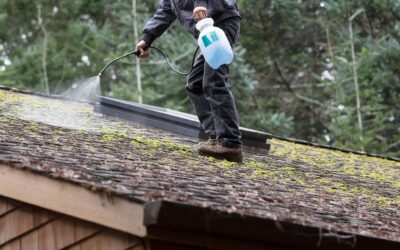Is Your Roof Ready for Fall Storms in Fort Wayne? Here’s What to Check
Fall in Fort Wayne brings crisp evenings, colorful leaves, and unpredictable storms—making roof readiness a seasonal priority. Heavy rain, strong winds, and the first signs of snow can expose weak spots that went unnoticed during the warmer months. For many families, preparing now means avoiding costly repairs and ensuring safety when winter weather sets in.
In this guide, we’ll walk through the key warning signs that your roof may not be storm-ready, along with practical steps you can take to protect your home before fall storms sweep through the city.
Key Takeaways
-
Cracked shingles, clogged gutters, attic mold, and sagging decks are common fall roof risks for Fort Wayne homeowners.
-
Regular fall inspections help catch problems early before snow, ice, and strong winds cause costly damage to your home.
-
Roof readiness includes gutter cleaning, trimming trees, upgrading attic insulation, and repairing flashing or worn-out shingles.
-
Local families can schedule a free fall inspection with Kingdom Roofing Systems to stay protected before winter storms arrive.
Warped or Cracked Shingles
As residents prepare for unpredictable fall storms, checking your asphalt shingles should be the first step in your fall roof inspection.
Cracked or warped shingles—often seen on older homes in north and west Fort Wayne—leave your house vulnerable to moisture, rain, and ice.
The transition from hot summer days to cool fall nights creates thermal stress, especially in roofs that haven’t had regular inspections. If you live near Lawton Park, extra attention should be paid to how your roof takes on seasonal changes.
Damaged or Clogged Gutters
Gutters overflowing with debris are one of the biggest causes of water damage during heavy rain and winter weather. Fort Wayne parks and tree-lined streets make fall beautiful, but leaves and twigs can quickly clog downspouts.
Gutter maintenance is especially important in east side neighborhoods near Headwaters Park and along the South Anthony corridor. When gutters stop draining properly, the overflow can damage siding, windows, and even leak into your attic.
Interior Moisture or Mold in the Attic
Homeowners often miss early signs of attic moisture or mold because it’s not always visible from the ground. But unchecked condensation can saturate attic insulation, damage air circulation, and lead to higher heating costs.
In areas near the Allen County Public Library or south of Electric Works, where homes range in age, it’s especially critical to inspect your attic and ensure your ventilation system is working properly before snow begins to fall.
Sagging Areas on the Roof Deck
A sagging roof deck may seem minor, but it’s a serious safety concern. In historic districts and older parts of the city, many homeowners have older framing beneath their shingles.
If the roof takes on too much snow or ice without proper support, repairs or even full roof replacement may be needed.
Look for depressions after rain or uneven lines when viewed from the ground.
Rusted or Failing Flashing
During fall and into winter, flashing failure becomes a major contributor to leaks. Many families living in homes near downtown Fort Wayne don’t realize that the metal flashing around vents and chimneys deteriorates faster in urban areas due to environmental exposure.
This is especially true for roofs facing north, where drying takes longer, allowing moisture to linger overnight.
If your flashing is pulling up or rusting, contact a trusted roofing team for timely repairs.
How to Prepare Your Roof for Fall Storms in Fort Wayne
After spotting early warning signs, the next step is making a plan to get your roof ready before fall storms roll into Fort Wayne. Here are the most important steps to take to protect their homes this season:
Schedule a Professional Fall Roof Inspection
A professional roof inspection should be part of every homeowner’s fall preparation plan—especially across Fort neighborhoods where strong winds and changing temperatures are expected.
At Kingdom Roofing Systems, we offer inspections tailored for Indiana weather, backed by decades of local experience. We frequently service homes west of downtown and in neighborhoods near parks and schools, ensuring your roof is winter-ready.
Clean and Maintain Your Gutter System
Effective gutter maintenance means more than scooping out debris. It’s about ensuring the system is draining properly and ready to handle snowmelt and heavy rain.
Gutter guards can be an excellent investment.
This small installation improves safety and keeps water away from your home’s foundation—especially important before ice begins to form.
Trim Overhanging Branches
Overhanging branches might seem harmless in summer, but when snow piles up and wind picks up, they become a major risk. Homeowners near Fort Wayne’s east and south sides should inspect trees near their home’s roofline.
If those branches snap, they can rip through shingles, vents, or even damage doors and windows below. Trimming before storms roll through the city helps protect both your investment and your family.
Upgrade Your Attic Insulation and Ventilation
Your attic is the front line of defense against winter weather. Poor insulation and blocked vents lead to ice dams, mold, and increased energy costs.
In areas like North Fort Wayne or neighborhoods near Chicago Avenue, insulation upgrades can drastically improve comfort and roof performance. Proper ventilation ensures air moves freely, keeping moisture out and indoor air quality safe during the coldest nights.
Repair or Replace Worn Shingles and Flashing
Many homeowners assume roof replacement is only needed after visible leaks, but worn shingles and flashing are often early signs. This is especially true for older homes on Fort Wayne’s south and west sides, where storms and wind gradually wear down protective layers.
Our services include inspecting the full system—from shingles to flashing to underlayment—and recommending roof repairs or installation updates that fit your timeline and budget.
Inspect and Secure Roof Vents and Pipe Boots
Pipe boots and roof vents are vulnerable spots where water damage can begin. These rubber components wear out with exposure to rain, ice, and changing air temperatures.
If you live near downtown or areas adjacent to Fort Wayne parks, schedule an inspection to confirm these areas are sealed properly. Our team installs long-lasting pipe boots and ridge vents to protect your home from future storm damage.
Schedule Your Fall Roof Inspection with Us
Fort Wayne’s neighborhoods—from the north near Coliseum to the south near Waynedale—deserve local roofing care that goes beyond a surface check.
We offer comprehensive residential services, including inspections, gutter cleaning, and insulation upgrades to prepare your home for whatever fall and winter bring. Call us at (317) 674-4900 or (765) 573-5899 to connect with our team that treats your home like their own.
Frequently Asked Questions
Do homes near downtown Fort Wayne need special roofing attention compared to other areas?
Yes, homes near downtown Fort Wayne may need extra care due to older construction, urban runoff, and flashing wear. We offer customized inspections and roof services for tight layouts and winter weather exposure.
Why should Allen County homeowners consider roof services before winter weather arrives?
Allen County homes face freeze-thaw cycles and snow buildup that strain older roofs. Fort Wayne residents benefit from pre-winter inspections, insulation checks, and drainage upgrades tailored to Indiana’s climate.
Are gutter guards a smart investment for older homes near the Fort Wayne Police Department area?
Yes, gutter guards reduce clogs from seasonal debris and extend gutter life. We install low-maintenance systems that help protect siding, prevent overflows, and reduce roofline damage in tree-filled neighborhoods.
How do roofing needs in Indianapolis differ from homes that face heavy snow in Fort Wayne?
Indianapolis homes often need wind-resistant upgrades, while Fort Wayne residents benefit from snow load protection. Our service team tailors materials and installation for each location’s unique storm risks.










